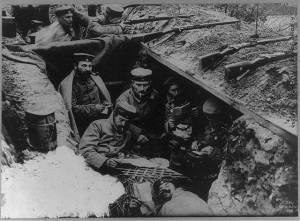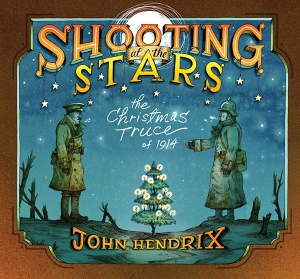 Yesterday saw the paperback release of my debut novel, In the Shadow of Blackbirds, a 1918-set tale involving a bright and logical sixteen-year-old girl who’s forced to deal with WWI, the Spanish influenza, and a ghost. The hardcover came out in April 2013, and my publisher, Amulet Books, decided to wait to release the paperback right before the publication of my second novel, The Cure for Dreaming. In fact, the paperback includes a sneak peek of The Cure for Dreaming.
Yesterday saw the paperback release of my debut novel, In the Shadow of Blackbirds, a 1918-set tale involving a bright and logical sixteen-year-old girl who’s forced to deal with WWI, the Spanish influenza, and a ghost. The hardcover came out in April 2013, and my publisher, Amulet Books, decided to wait to release the paperback right before the publication of my second novel, The Cure for Dreaming. In fact, the paperback includes a sneak peek of The Cure for Dreaming.
Because eighteen months have passed since the book first entered the world, I’ve had time to think about the most important lesson I’ve learned as a published author: patience.
Anyone who’s ever tried to get a book published knows that patience is required from day one. First you need the patience to simply sit down and write the book. Then you need to take the time to polish and revise the manuscript, share the book with early readers, and submit the work to literary agents. At that point, you then wait and wait and wait to see if the book will get published.
If you’re fortunate and land a book contract with a publishing company, more waiting ensues. You wait for your editorial letter to arrive from your editor and then for all the other various editing stages. You wait to see the cover, and then you have to wait to share the cover. Most importantly, your patience is put to the ultimate test when you’re given a publication date that’s slated for eighteen months to two years–and sometimes even longer–after the day you first learned your book would be published.

The April 2013 launch party at Powell’s Books, Beaverton, Oregon
Once that publication date at long last arrives, there’s cheering, there’s tweeting, there’s celebrating. In my case, my mom, whom I don’t see too often these days, flew in to Oregon from Ohio for a week. My sister flew up from California for my book launch party, and one of my best friends from college drove down from Washington state. We ate cupcakes. We went out to dinner. I signed dozens of books for readers.
Then, one week after the publication date passed, Mom flew back to Ohio, everyone else returned to their respective homes, and it became other authors’ turns to celebrate a release date. All I heard was silence. My book didn’t suddenly race to the top of the New York Times bestseller list or land me a spot on The Today Show. Life as I knew it hadn’t really changed. I was still a mom living in the suburbs of Portland, OR, driving my kids to school and cleaning up dog poop in the yard . . . still hurrying to squeeze in writing time and trying to get another book published.
Thankfully, I had a strong support team of other debut authors, who assured me postpartum book release depression is a very real thing. We hear so many stories of authors climbing to instant fame and having their books celebrated by the world, and so it’s a strange and surprising feeling to watch one’s publication date come and go with one swift rush of excitement. It’s hard to replicate that surge of sheer joy in the weeks following a publication date.
However, I learned a little secret about the way the YA book world works: buzz keeps building over time. Unlike what I’ve heard to be the norm in the world of adult fiction publishing, you do not need to have your book become a bestseller in the first weeks of publication in order for people to continue talking about it. In fact, some of my major book reviews for In the Shadow of Blackbirds didn’t even show up until after April 2013.
 In May 2013 I got to fly down to my book’s setting of San Diego, California, and promote the novel in high schools. While there, I learned the book had gone into its second printing. I also learned the novel was starting to receive award nominations.
In May 2013 I got to fly down to my book’s setting of San Diego, California, and promote the novel in high schools. While there, I learned the book had gone into its second printing. I also learned the novel was starting to receive award nominations.
Over six months after the book debuted, I found out In the Shadow of Blackbirds was a 2014 Morris Award Finalist, which suddenly gave the book even more attention. In January 2014–nearly a year after the book debuted–I got to fly to Philadelphia and celebrate with all of the other Morris Award Finalists at the American Library Association’s Midwinter Meeting.
 Spring 2014 saw the publication of the first translated edition of the novel, a Czech edition, as well as a Scholastic Reading Club paperback edition.
Spring 2014 saw the publication of the first translated edition of the novel, a Czech edition, as well as a Scholastic Reading Club paperback edition.
Eighteen months post-publication, to my utter surprise, I’m still receiving awards and accolades for the book (I just accepted the Oregon Spirit Book Award this past weekend), and I’m still hearing from both brand-new and established fans. If I could go back to the version of me who was driving home from dropping my mom off at the airport, wondering if that was it for my book, I would say, “Just stop! Have patience. Your job was to write the strongest book you could possibly write, and now it’s time to let others spread the word about your work.”
That’s the other valuable nugget of info I learned about writing YA fiction: readers of YA novels are amazingly supportive. Thank you so much for your incredible love and enthusiasm for our books. It’s meant the world to me.
Order the paperback of In the Shadow of Blackbirds online:














